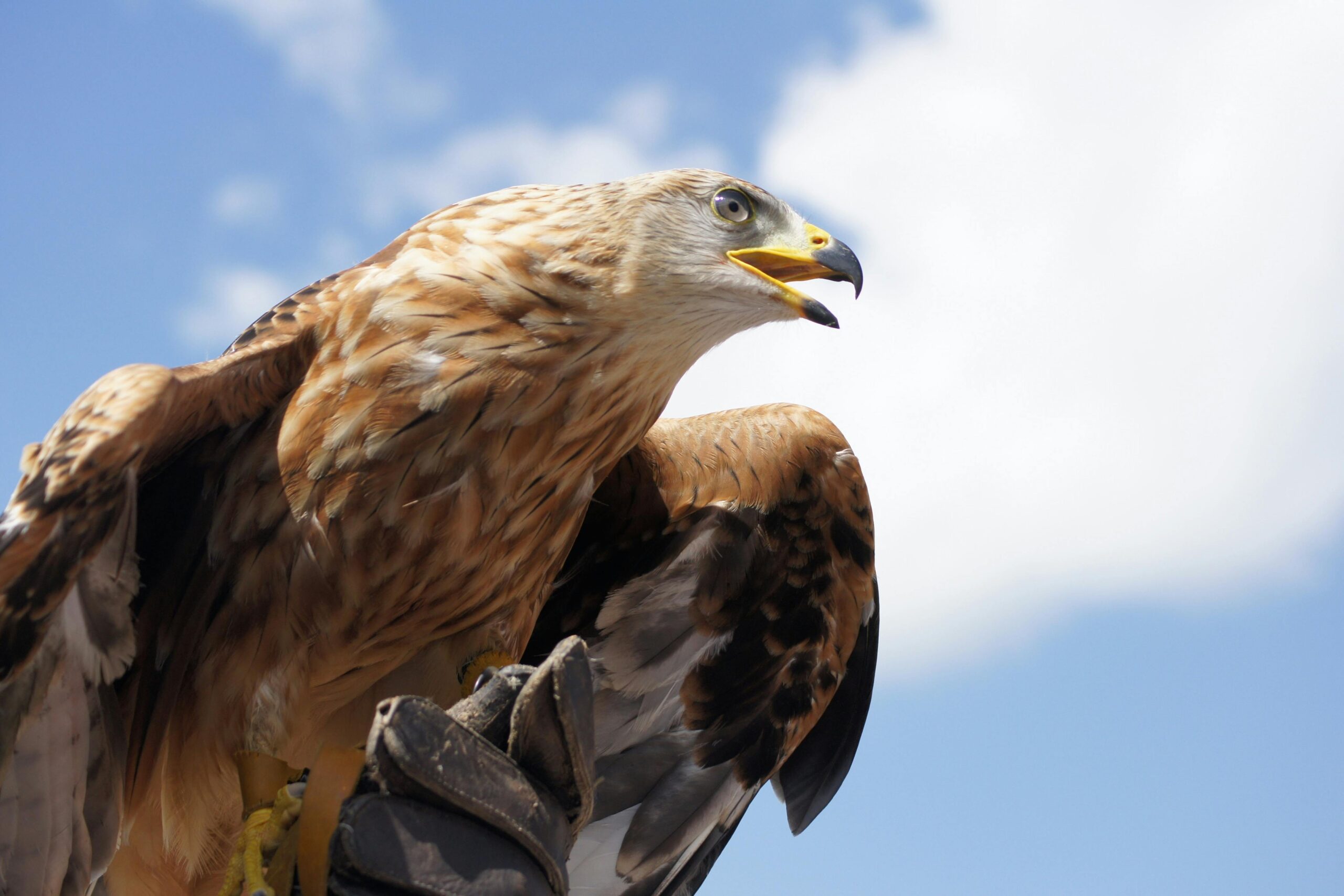Golden Eagles (Aquila chrysaetos) primarily communicate using vocalizations, with a limited range of calls that are not used for marking territory but rather for communicating about food and other needs. They also communicate through flight displays when defending their territory.
Vocalizations of Golden Eagles
Golden Eagles have nine different calls that they use to communicate:
- Chirp: Newly hatched nestlings use a clear chirp, which rapidly develops into a series of chirp or chirp calls.
- High-pitched Chirps: By 10 days of age, nestlings use high-pitched chirps, particularly just before prey or nesting material delivery, and during incubation exchanges.
- Calls from Young Eagles: Young eagles that have left the nest often vocalize from the base of the nesting cliff.
- Sex Differences: Males have a more high-pitched voice than females, but there is no information on geographic variation of vocalizations.
Golden Eagles are mostly silent outside of the breeding season, but they may communicate through flight displays when defending their territory.
Breeding Season Communication
During the breeding season, Golden Eagles have home ranges from 20 to 33 square kilometers and defend the boundaries of their home range with flight displays. They may also communicate through vocalizations, particularly:
- Nestling Vocalizations: Nestlings start vocalizing up to two days before hatching and continue to use various chirp calls as they develop.
- Prey and Nesting Material Delivery: Nestlings use high-pitched chirps when prey or nesting material is delivered.
- Incubation Exchanges: Nestlings also vocalize during incubation exchanges between the parents.
Hunting and Prey Communication
Golden Eagles primarily eat small mammals such as rabbits, hares, ground squirrels, prairie dogs, and marmots. They also eat some birds, reptiles, and fish, and have been known to capture large prey, including seals, ungulates, coyotes, and badgers.
When hunting, a pair of eagles will often work together, with one chasing the prey until it is exhausted, then the other swooping down to kill it. This coordinated hunting behavior may involve some form of communication, but the specific details are not well-understood.
Predators and Competitors
Golden Eagles have few predators, with wolverines and grizzly bears being the only recorded predators of golden eagle nestlings. However, they may compete with other species for prey and habitat, including:
- Bald Eagles
- Coyotes
- California Condors
- White-tailed Eagles
The impact of Golden Eagles on the populations of their prey species, as well as their interactions with other predators and competitors, are important areas of ongoing research.
Conclusion
In summary, Golden Eagles primarily communicate through vocalizations, with a limited range of calls used to convey information about food and other needs, particularly during the breeding season. They also use flight displays to defend their territory. While the specifics of their communication are not fully understood, the available research provides valuable insights into how these majestic birds interact and thrive in their natural environments.
References:
– https://ielc.libguides.com/sdzg/factsheets/goldeneagle/behavior
– https://www.audubon.org/field-guide/bird/golden-eagle
– https://www.reddit.com/r/Awwducational/comments/ecu2cs/bald_eagles_may_communicate_through_vocalizations/
– https://birdsoftheworld.org/bow/species/goleag/cur/sounds
– http://www.biokids.umich.edu/critters/Aquila_chrysaetos/





